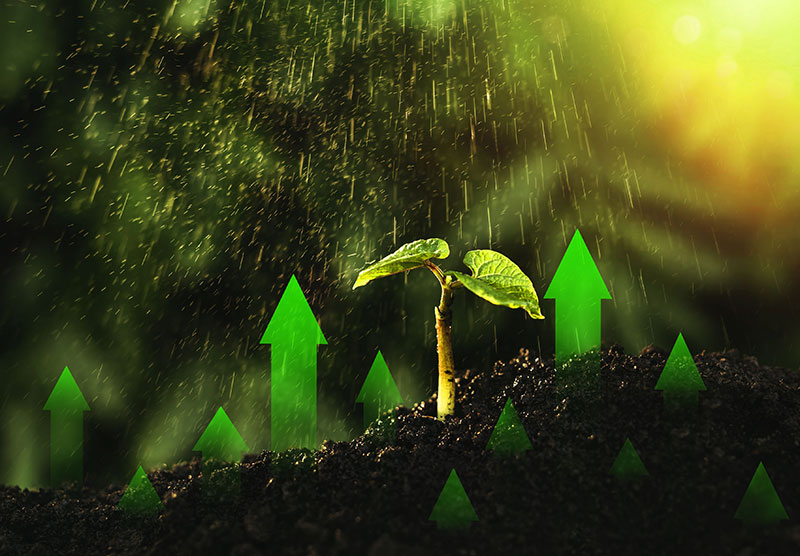Agricultural Invesment
Cultivation or cultivation is the process of producing food, fodder, fiber and other commodities by means of the systematic cultivation of plants and animals. The word cultivation comes from the word “sowing” the seed, i.e. its seed, and plowing the land for cultivation, i.e. preparing it for sowing the seed. In the past, agriculture meant only “the science of cultivating the lands,” but now the word agriculture covers, as previously mentioned, all the basic activities for the production of food, fodder, and fiber, including all the techniques required for raising and processing livestock and poultry .

Cultivation or cultivation is the process of producing food, fodder, fiber and other commodities by means of the systematic cultivation of plants and animals. The word cultivation comes from the word “sowing” the seed, i.e. its seed, and plowing the land for cultivation, i.e. preparing it for sowing the seed. In the past, agriculture meant only “the science of cultivating the lands,” but now the word agriculture covers, as previously mentioned, all the basic activities for the production of food, fodder, and fiber, including all the techniques required for raising and processing livestock and poultry .
Tea cultivation in Java , Indonesia .
Tractor farming in Sweden .
Agriculture refers to a wide range of agricultural production businesses, covering a wide range of labor measures (land area, production output, etc…), practices and commercial orientation . On one end of the spectrum, there is the subsistence farmer who cultivates a small area of land with limited resource inputs, and produces food that is sufficient for him and his family only .
On the other end of this spectrum is intensive commercial farming, which includes industrial farming. This agriculture includes large fields and numbers of animals, large resource inputs (pesticides, fertilizers, etc…), and a high level of mechanization . These operations generally try to maximize financial income from crops, livestock and poultry .
Modern agriculture extends far beyond traditional methods of producing human food and animal feed. Other agricultural produced goods include cut flowers, ornamental and nursery plants, timber, fertilizers, leather used in leather goods, industrial chemicals (starch, sugar, ethanol, alcohols, plastics), fibers (cotton, wool, hemp, flax) , fuels (methane from biomass, biofuels ) and legal and illegal drugs (biopharmaceuticals, tobacco, opium, cocaine, cannabis ).
The twentieth century saw huge changes in agricultural practices, especially in the field of agricultural chemistry. Agricultural chemistry includes applications of chemical fertilizers, chemical insecticides (see pest control), chemical fungicides, soil composition, analysis of agricultural products, and nutritional needs of farm animals. Beginning in the Western world, the Green Revolution spread many of these changes to farms around the world, with varying success rates .
Recent changes in agriculture include: soilless cultivation, plant breeding, hybridization, genetic manipulation, surface cultivation, better soil nutrient management, and improved weed control. Genetic engineering has produced crops that have traits that surpass naturally occurring plants, such as higher yields and disease resistance. The modified seeds germinate faster, which enables us to grow them in an extended growing area. Genetic engineering of plants is a controversial topic, especially in the case of herbicide-resistant plants .
Agronomists develop plans for irrigation, drainage, maintenance and sanitary engineering, and this is of great importance in usually dry areas that need continuous irrigation , and also in large farms .
The packaging, processing, and marketing of agricultural products are activities closely related to science. Quick-freezing and drying methods have expanded the market for farm produce (see food preservation; meatpacking industry ).
Animals, including horses, mules, oxen, camels, alpacas , llamas , and dogs, are often used to till fields, harvest crops and transport farm produce to market. Animal nature means raising and growing an animal for meat or for harvesting animal products (such as milk, eggs or wool) on a continuous basis. Machines have greatly increased the efficiency and productivity of farms in the West. Airplanes , helicopters, trucks and tractors are all used in Western agriculture for sowing seeds and spraying operations to control insects and diseases .
The Egyptians were among the first peoples to practice agriculture on a large scale, which began in the pre-dynastic era and then developed over the centuries, leading to what is dated to the agricultural revolution during the Neolithic period, that is, between approximately 10,000 BC and 4,000 BC.
Is agriculture an invention or a discovery?
Agriculture began between 7,000 and 10,000 years ago, during the Neolithic period. Eight crops were available The Neolithic period, the most important of which are: wheat, peas, lentils, barley, flax, and chickpeas



